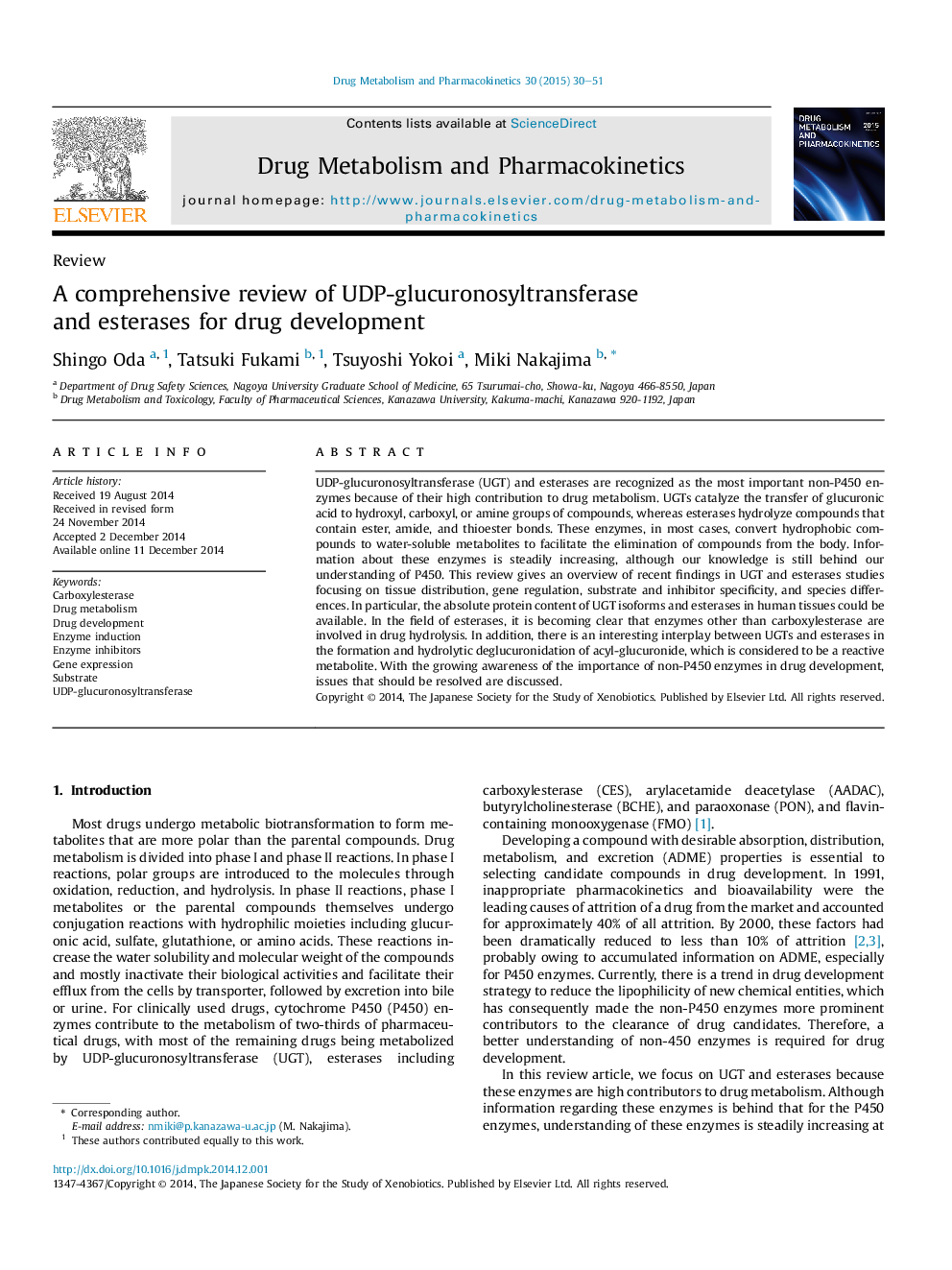| Article ID | Journal | Published Year | Pages | File Type |
|---|---|---|---|---|
| 2478898 | Drug Metabolism and Pharmacokinetics | 2015 | 22 Pages |
UDP-glucuronosyltransferase (UGT) and esterases are recognized as the most important non-P450 enzymes because of their high contribution to drug metabolism. UGTs catalyze the transfer of glucuronic acid to hydroxyl, carboxyl, or amine groups of compounds, whereas esterases hydrolyze compounds that contain ester, amide, and thioester bonds. These enzymes, in most cases, convert hydrophobic compounds to water-soluble metabolites to facilitate the elimination of compounds from the body. Information about these enzymes is steadily increasing, although our knowledge is still behind our understanding of P450. This review gives an overview of recent findings in UGT and esterases studies focusing on tissue distribution, gene regulation, substrate and inhibitor specificity, and species differences. In particular, the absolute protein content of UGT isoforms and esterases in human tissues could be available. In the field of esterases, it is becoming clear that enzymes other than carboxylesterase are involved in drug hydrolysis. In addition, there is an interesting interplay between UGTs and esterases in the formation and hydrolytic deglucuronidation of acyl-glucuronide, which is considered to be a reactive metabolite. With the growing awareness of the importance of non-P450 enzymes in drug development, issues that should be resolved are discussed.
Graphical abstractTissue distribution, regulation, substrate and inhibitor specificity, and species differences of UGT and esterases are summarized in this manuscript.Figure optionsDownload full-size imageDownload as PowerPoint slide
